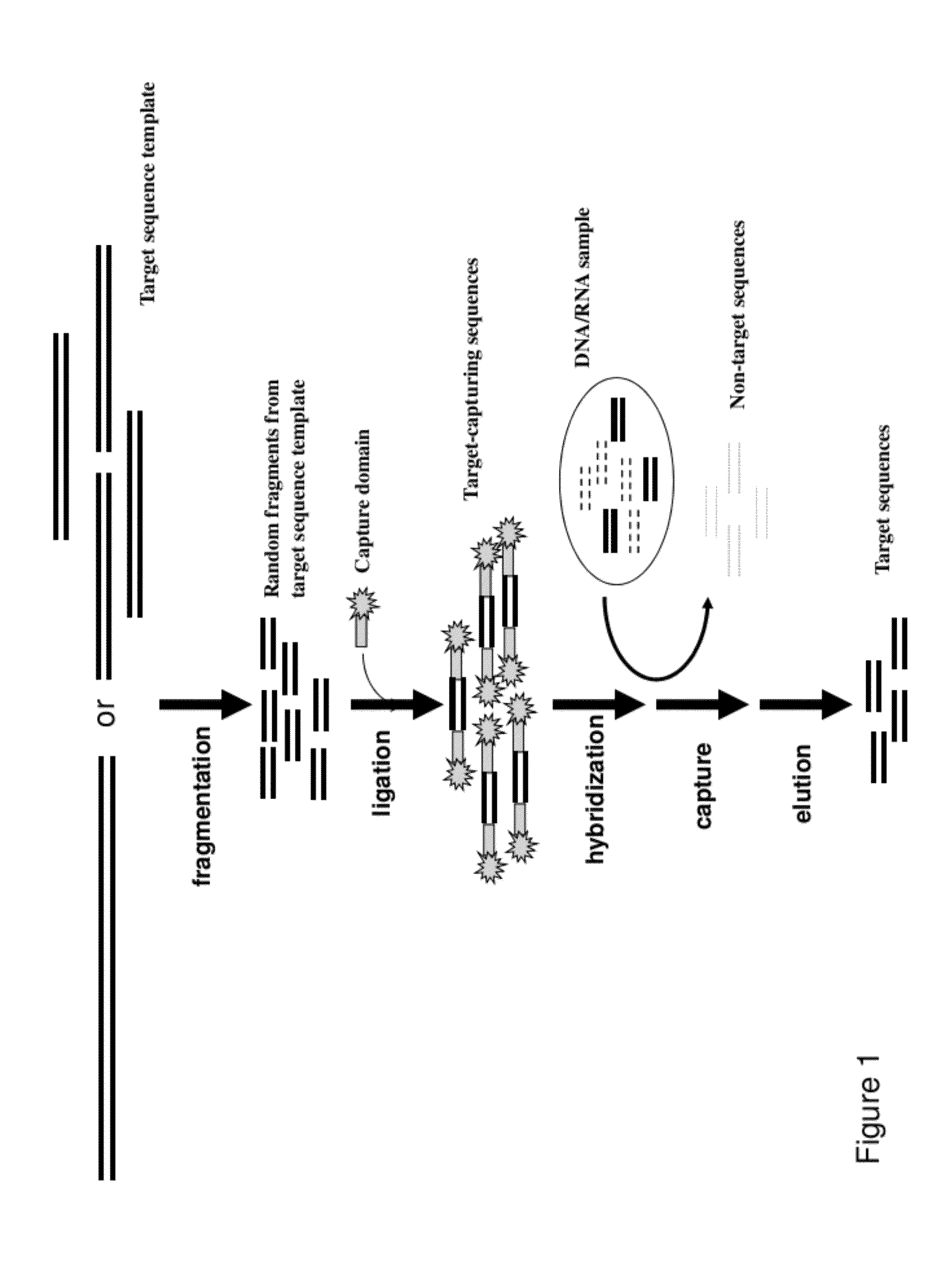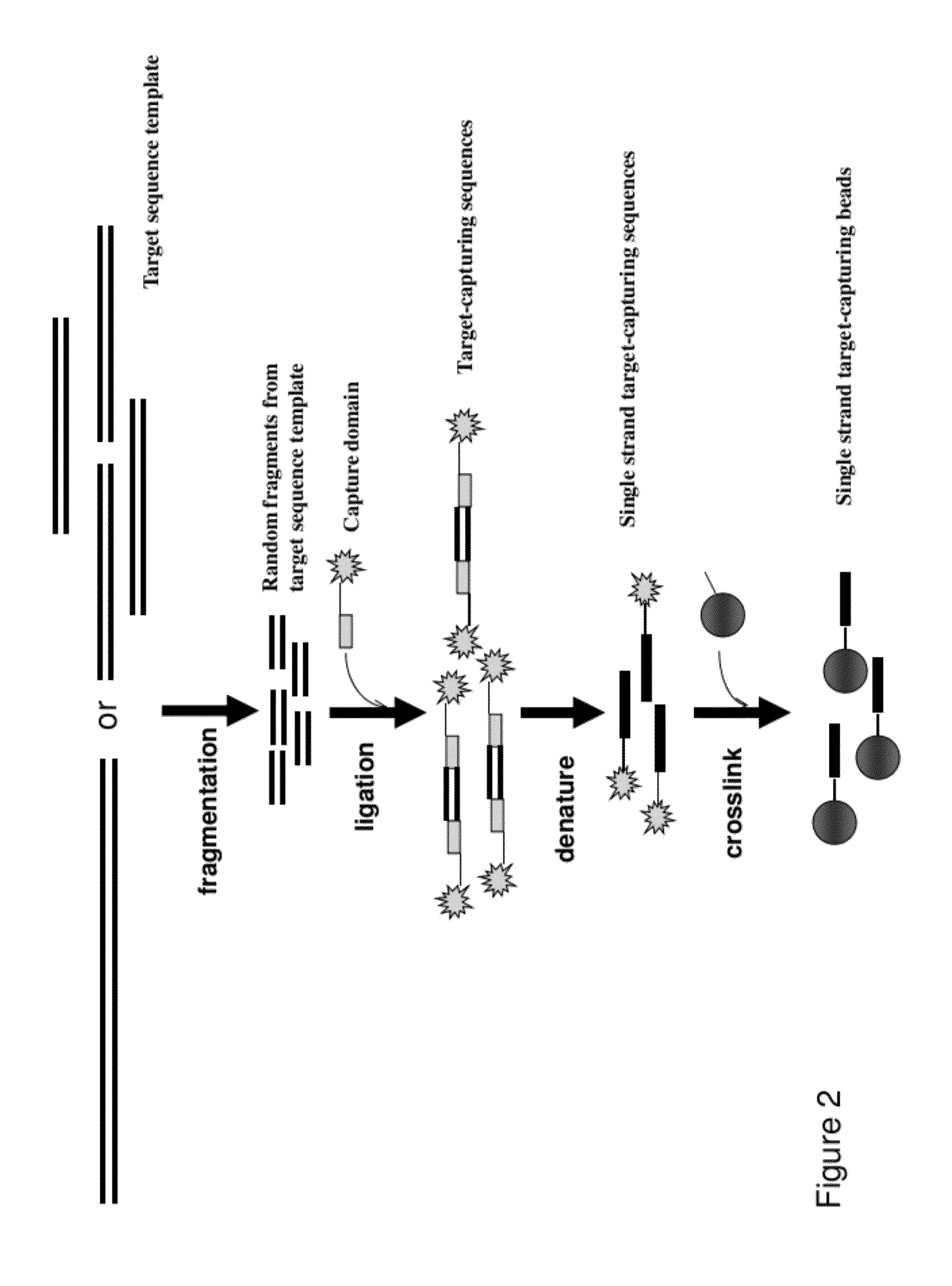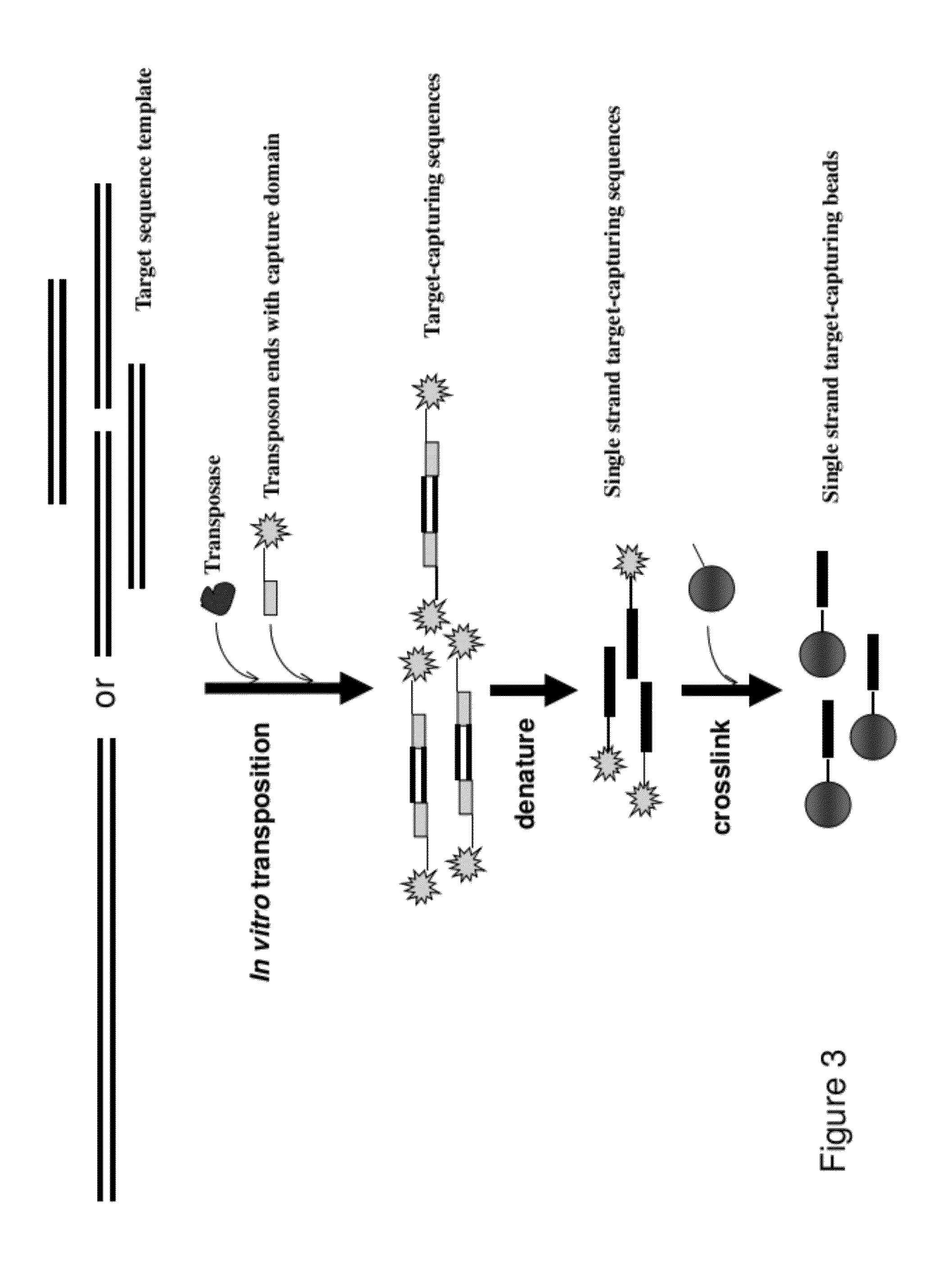Methods, Compositions, and Kits for Making Targeted Nucleic Acid Libraries
a nucleic acid library and kit technology, applied in the field of dna library making kits, can solve the problems of high cost per reaction, and inapplicability to sequencing samples for targeted genomic regions without substantial sequence information
- Summary
- Abstract
- Description
- Claims
- Application Information
AI Technical Summary
Benefits of technology
Problems solved by technology
Method used
Image
Examples
example 1
Procedure for Making a Biotin-Labeled Target-Capturing Sequence Library
[0055]Starting materials that can be used as target sequence templates for generating a target-capturing library include, but not limited to, commercially available large genomic DNA fragments such as BAC clones, or a collection of PCR fragments generated from amplification of areas of interest, or collection of cDNA clones from commercial source or private collections, or areas of genomes / transcriptomes amplified through rolling circle amplification.
[0056]Relatively large amounts of target sequence template DNA are needed to generate target-capturing libaries for extended use. Large quantity materials that commercially available are often preferred for its reproducibility and cost effectiveness. Amplified materials are often recommended to be produced in large batches to sustain consistency.
[0057]Target sequence templates are fragmented into desired sizes by incubating with an EZ-Tn5™ transposase (EpiCentre BioT...
example 2
Procedure for Making Target-Capturing Beads Using Photoactivation
[0060]This example illustrate the procedure for making target-capturing beads using photoactivation. A single-stranded adaptor sequence incorporated with a photoactivatible nucleotide analogue is attached as a 5′ overhang to the dsDNA transposon end sequence. The photoactivatible nucleotide analogues disclosed in U.S. Pat. No. 5,082,934 that can form a covalent bond with nucleotides on the complementary strand upon activation by UV radiation can be used for the purpose of the present invention. Single stranded sequences that are complimentary to the adaptor sequence are chemically synthesized and attached to solid capture beads.
[0061]Target-capturing sequence library is generated using a transposition reaction as described in Example 1, with a transposon end sequence incorporated with a photoactivatible nucleotide analogue. Incubate the target-capturing sequences with photoactivatible adaptor sequences and the solid ca...
example 3
Procedure for Making Target-Capturing Beads Using Chemical Crosslinking
[0062]This example illustrates the procedure of using endonuclease like DNAse I and chemical crosslinking reagents to make target-capturing beads with single-stranded sequences.
[0063]DNAse I causes random double stranded scission of DNA in the presence of Mn2+. The DNA fragment size can be controlled by varying the enzyme concentration, incubation time and / or temperature. To find conditions that produce desired fragment sizes, fixed amounts of DNA are incubated with different dilutions of DNAase I in Tris buffer (50 mM Tris-HCl, pH 7.5, 50 μg BSA / ml) with 10 mM Mn2+. The digestion can be performed at room temperature or 37° C. for different time periods and the resulting fragments are analyzed by agarose gel electrophoresis. The ideal length of DNA fragments is between 100 to 200 bp. The DNAase digestion is stopped by adding EDTA stop solution and heated at 65° C. for 5 to 10 minutes. Once an optimal condition is...
PUM
| Property | Measurement | Unit |
|---|---|---|
| temperature | aaaaa | aaaaa |
| concentration | aaaaa | aaaaa |
| size distribution | aaaaa | aaaaa |
Abstract
Description
Claims
Application Information
 Login to View More
Login to View More - R&D
- Intellectual Property
- Life Sciences
- Materials
- Tech Scout
- Unparalleled Data Quality
- Higher Quality Content
- 60% Fewer Hallucinations
Browse by: Latest US Patents, China's latest patents, Technical Efficacy Thesaurus, Application Domain, Technology Topic, Popular Technical Reports.
© 2025 PatSnap. All rights reserved.Legal|Privacy policy|Modern Slavery Act Transparency Statement|Sitemap|About US| Contact US: help@patsnap.com



